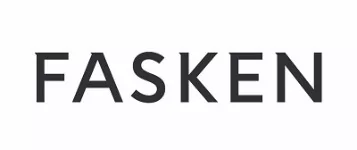- within Law Department Performance and Transport topic(s)
- with Senior Company Executives, HR and Finance and Tax Executives
- with readers working within the Banking & Credit, Business & Consumer Services and Insurance industries
As of publication, Prime Minister Carney's new Cabinet has appointed 10 Secretaries of State, including Secretary of State (Defence Procurement) Stephen Fuhr1. In addition, legislation is currently before the House to move the Canadian Coast Guard under the purview of the Minister of National Defence.
While Secretary of State appointments and the possibility of a Defence Procurement Agency are neither a new political concept nor a unique approach, the movement of the Canadian Coast Guard under the purview of the Minister of National Defence is uncharted waters.
We explain these changes and raise several questions that will have to be resolved to improve defence procurement.
What is the Secretary of State (Defence Procurement)?
Both Liberal and Conservative governments have appointed Ministers (Secretaries) of State in the 40 years since the enactment of the Ministries and Ministers of State Act2, although this is the first one appointed for defence procurement3.
A Secretary of State is established by Cabinet under the Act by way of a general appointment to develop new comprehensive policies for any matter within the responsibility of the government, or a specific assignment to assist one or more ministers with responsibilities for a department or other portion of the federal public administration to carry out those responsibilities.
The Secretary of State (Defence Procurement) was established under the latter approach and, accordingly, will assist the Minister of Public Works and Government Services (Minister of PWGSC), who possesses near to exclusive authority to purchase defence supplies for the Department of Defence under the Defence Production Act.
What is the Role of the Secretary of State (Defence Procurement)?
Secretaries of State are, in general, bound by collective responsibility and Cabinet confidentiality and the various rules and policies that apply to Ministers, including under the Conflict of Interest Act and the Lobbying Act.
The Secretary of State (Defence Procurement) as noted, will support the work of the Minister of PWGSC and will exercise only those powers, duties or functions assigned or transferred to the position. The Minister remains at all times accountable for the department and as such, the exercise of any power, duty or function of the Secretary of State will be subordinate to the Minister's authority.
The Secretary of State (Defence Procurement) must exercise this supportive function within the services and facilities of the Department.
What is the Defence Procurement Agency?
Although no details have been released as of publication, a defence procurement agency is not an entirely new concept in federal defence procurement. In fact, until 1969, defence procurement was under the authority of the Minister for Defence Production. The Minister was appointed under the Defence Production Act and reported to Parliament. In 1969, the office for the Minister for Defence Production was abolished, and the portfolio and responsibility for defence procurement transferred to the Minister of Supply and Services and eventually, in 1996to the Minister of Public Works and Government Services (making that Minister responsible for the vast majority of federal purchasing).
It is anticipated that any new Defence Procurement Agency would continue to operate under the Minister of PWGSC.
Realigning the Canadian Coast Guard under the Secretary of State
On Monday, June 9, 2025, Prime Minister Mark Carney announced the Government of Canada's latest defence spending plan to meet the (current) NATO spending target of 2% of GDP4. A critical part of this renewed commitment is an intention to incorporate the Canadian Coast Guard (CCG) $2.5 billion annual budget towards the NATO spending target.
These legislative ambitions may even have implications for the new Secretary of State (Defence Procurement).
Part 5 of Bill C-2, the Strong Borders Act, recently introduced in the House of Commons proposes a suite of amendments:
- Allowing Cabinet to designate another minister, in addition to the Minister of Fisheries and Oceans, responsibility over coast guard services. It is anticipated this may be the Minister of National Defence, which would expand the responsibilities of the new Secretary of State (Defence Procurement).
- Broadening of coast guard services to include the support of government departments through the provision of ships, aircraft and other services, security patrols, and the collection, analysis and disclosure of information or intelligence.
The purpose of these reforms and additional coast guard services will be determinative of their inclusion in defence spending. As of publication, this remains to be explained.
So, What Does All This Mean for Defence Procurement?
At the time of publication, it is not clear how all of this ties together, and what the outcome will be. Many questions remain to be answered, such as:
- Will the Secretary of State receive the necessary authority
to act under the Defence Production Act or will the position remain
fully under the direction and control of the Minister?
- Depending upon the scope of authority to be granted, the Minister, Treasury Board and Cabinet may be implicated in any grant of authority required for the Secretary to execute his role.
- PSPC already has multiple defence-specific procurement teams, well-versed in defence procurement. Moving public servants to a Defence Procurement Agency absent any substantive change to the way Canada procures its defence supplies may result in nothing more than a change of address for these procurement teams.
- Will defence procurement remain subject to the policies and
procedures that must be complied with in procurement or will
exceptions be made?
- The delays in defence procurement are often blamed on the plethora of policies, processes, and hoops that defence requirements must make it through before an actual purchase can occur.
- However, many of these policies and processes assure accountability, oversight, and probity (for example, compliance with the Financial Administration Act and the associated Treasury Board policies and directives). They cannot simply be set aside to speed things up.
- A coherent and thoughtful review will be necessary to determine where and when exceptions are permitted.
- How will the necessary cooperation between multiple
stakeholder departments be restructured or streamlined?
- The Minister may possess near to exclusive authority to purchase defence supplies on behalf of the Department of National Defence (DND), but the Minister's authority is not exclusive in all respects. In reality, the purchase of defence supplies is the final stage of a multi-department process.
- Multiple cycles of review and approval will continue to impact purchasing – the more complex the procurement, the more review cycles will be required.
- DND must still seek and receive budget approval (internally and from Treasury Board), develop its requirements, and evaluate bids received against those requirements; Industry Canada (ISED) must develop the Industrial and Technological Benefits and Value Proposition requirements and evaluate those elements of any bid; and Indigenous Services Canada must address the Indigenous benefits and participation plans. Finally, depending upon cost and risk, PWGSC and DND may require further Treasury Board approval for final contract award.
- How will the CCG contribute to the NATO 2%
target?
- If CCG intelligence and security services are used for non-military purposes, it is questionable if these expenditures will be included towards NATO's target. However, if there is a genuine effort for these services to be used towards military tactics and operations, it is more likely they will fit under defence spending.
- By reforming the CCG and expanding its services to include intelligence and security, the government may be realigning the organization for more defensive purposes and formalizing a connection with the military.
- Will Canada engage in meaningful revision to its hyper
aversion to risk?
This is the elephant in the room that seems to haunt the vast majority of defence procurements, creating unworkable situations.
- Canada often provides terms and conditions that Industry simply cannot accept (and thus, will not bid for) or must manage through more expensive financial bids to address the inappropriate risk burden being downloaded (including aspirational, not actual, requirements that may eventually be proven impossible to achieve).
- Substantial realignment and understanding of risk by the government is necessary, so that Industry can come to the table and bid in a commercially-realistic manner, as opposed to having to take an "uber-risk management" approach. True understanding of risk and risk sharing, not empty policy statements to that effect, is required.
- Although it has been claimed that the procurement landscape in Canada is litigation-intense, in reality, it is simply not true. As an example, complaints at the Canadian International Trade Tribunal have remained fairly consistent in numbers for the past decade (60 to 75 complaints annually), with a slight bump up in 2020-2021 (compare this to the Government Accountability Office (GAO) in the US, that hears upwards of 2,000 complaints a year).
Footnotes
1. The Honourable Stephen Fuhr is the Member of Parliament for Kelowna.
2. Ministries and Ministers of State Act, R.S.C., 1985, c. M-8.
3. Prime Minister Chrétien appointed a Secretary of State for Defence in 1996.
4. – https:/www.canada.ca/en/department-national-defence/news/2025/06/canadasnew-government-is-rebuilding-rearming-and-reinvesting-in-the-canadian-armed-forces.html
The content of this article is intended to provide a general guide to the subject matter. Specialist advice should be sought about your specific circumstances.




